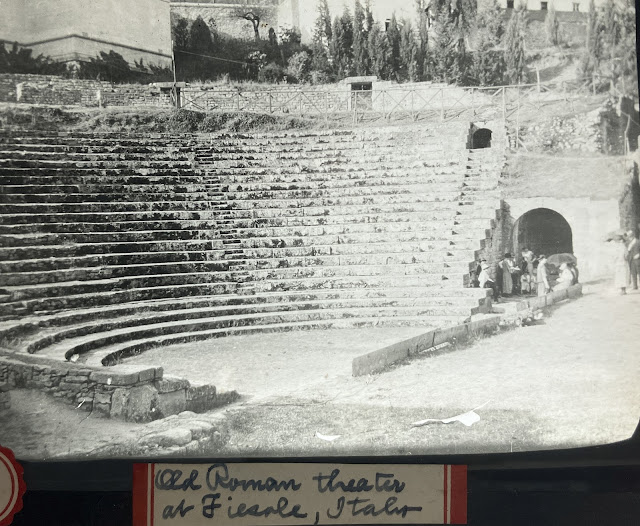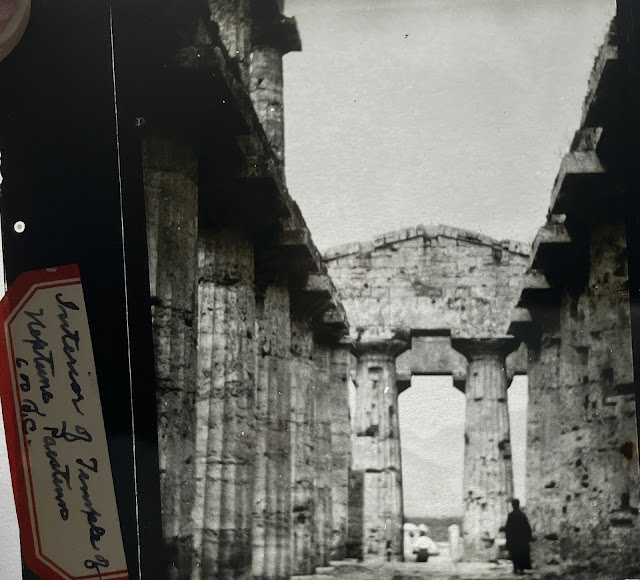Every Christmas when I make date filled cookies, I think back to the first year I made them to take to my grandmother's house for the holidays. I had never heard of them and was planning on surprising her, assuming that she hadn't heard of them either. But it was me who was surprised when she said, “Oh! Filled cookies! My dad made those at his bakery, and they were so good that people would come from miles around to get them.” My disappointment about the spoiled surprised was quickly overshadowed by the realization that my great-grandpa Pete had been a baker and had baked the same cookies I just had. I knew little about him at that time, but that conversation with my grandmother would begin to change that.
Peter Christensen immigrated from Denmark in 1900 at the age of 17, destined for Council Bluffs, Iowa. He learned the baking trade in Omaha, Nebraska and worked in the trade for several years in Council Bluffs. He met Clarence Bell, a bakery owner of Missouri Valley, Iowa. The two men decided to go into business together and for reasons unknown focused on purchasing the City Bakery in Huron, South Dakota. Neither of the men had any known connection to Huron, but this particular bakery had changed hands several times in the two previous years so perhaps they felt this would be a good investment. They sealed the deal on City Bakery on September 23, 1908 and immediately began making improvements.
 |
| The original wood-frame Bell Bakery shop, just to the left of the Costain Building. This is the 300 block of Dakota Ave. South. |
Clarence Bell and his wife Tilda purchased a home in Huron, and Peter Christensen lived above the bakery until his marriage two years later. Bell and Christensen made improvements to the wood frame building, including a new oven and an expansion to the building, both in 1910. Bell handled the business affairs, while Christensen handled the baking operations.
 |
| A Bell Bakery advertisement from 1910 in a Huron newspaper |
In 1914, plans were made for a new I.O.O.F. building, three stories in height, to be built right where Bell Bakery stood. The new building was to be built of brown vitrified brick trimmed with cream colored Bedford limestone, 50 feet in width and 115 feet long. The existing bakery building, meanwhile, was moved nearby (behind the Marvin Hughitt Hotel), allowing the business to continue to operate during the construction process. But the move didn't go smoothly. “The Bell Bakery is now comfortably located on Fourth street just off the avenue, after a somewhat tempestuous journey across the street and around the corner. The building held together very well, until nearly in place, when a section of the south wall bulged badly. This will not, however, be a serious matter, as it was braced up at once,” wrote the local newspaper. Construction of the new building was to begin immediately.
 |
| The two-story wood frame Bell Bakery building at its "new" location on Fourth street, west of the Marvin Hughitt. The building would later be sold and moved again. |
By mid-October the I.O.O.F. Building was near completion. Bell Bakery would occupy the southernmost main floor store front (340 Dakota Ave.), and Mills Grocery the north store front. Offices and some Odd Fellow reading rooms would occupy the second floor. A large 50' square lodge hall was to be at the front of the 3rd floor with dining rooms and a kitchen among other things in the remainder of the space. Bell's new space was completed in early December 1914.
An addition was constructed to the bakery space, giving it a length of 165 feet. The front portion of the bakery was a “very handsome” sales room with display cases designed for keeping the baked goods from drying out. The shop was located to the rear and was outfitted with modern equipment and machinery.
 |
| Bell Bakery workers. Pete Christensen is 2nd from right; to his left is his brother, Soren Christensen, who was learning the baking trade from his brother. |
 |
| Inside the bakery; Pete Christensen at left. |
 |
| Pete's handwritten recipe for Cream Puffs, courtesy of Ree Lyons. |
In 1920, Pete sold his interest in the bakery to Erwin G. Schmidt and purchased a farm southwest of Huron. He farmed until 1946 when he retired, sold his farm and moved to Gardena, California. He passed away in 1960.
Erwin Schmidt eventually purchased Clarence Bell's interest in the bakery as well and conducted the business until 1950, when it was closed in an involuntary bankruptcy proceeding. The equipment was sold to a Mitchell restaurant, and the Singer Sewing Machine company then took over the vacant store space.

















































